Fraud Committed by Potential Homebuyers
Previously, we’ve discussed mortgage scams targeted toward homeowners facing for foreclosure or behind on their mortgage payments. There is another side of mortgage fraud and it’s committed by potential home buyers during the application process.
Scotty Ball, a partner at Stewart, Melvin & Frost who specializes in residential and commercial real estate law, answers questions about fraud committed by homeowners.
Question: What are some of the basic frauds committed by people seeking mortgage loans?
Scotty: Mortgage fraud is as simple as misrepresenting or omitting information on a mortgage loan application to obtain a loan or a larger loan than the borrower would have obtained by being truthful on their application. An example is occupancy fraud where a borrower applies for a mortgage saying it will be their primary residence but plan all along to use it as in investment property. Lenders typically charge a higher interest rate for non-owner-occupied properties.
Another example is income fraud. Applicants overstate their income to receive a larger loan. It’s not as common today with full documentation loans but there still have been cases where a borrower will alter or forge a W-2 form or bank account records to inflate their income.
There also have been cases where borrowers claim self-employment in a non-existent company and use false documents.
Question: Are there more elaborate frauds involving the mortgage loan process?
Scotty: Silent second investors and equity skimming are two common frauds committed.
A silent second investor fraud is what it sounds like. The buyer of the property will borrow the down payment from another person, sometimes the seller of the property. The undisclosed loan is not recorded to further conceal its status from the primary lender. The primary lender believes the borrower has invested their own money in the down payment.
Equity skimming is a little more elaborate. An investor will use a straw buyer with false income documents and false credit reports to obtain a mortgage loan in the straw buyer’s name. Following the closing, the straw buyer will sign the property over to the investor in a quit claim deed which relinquishes the straw buyer’s rights to the property and provides no guaranty to the title.
The investor does not make payments and rents the property until foreclosure takes place several months later. All the while collecting rent money.
Question: Do scammers try to take advantage of reverse mortgages?
Scotty: They do. As most people know, reverse mortgages allow a homeowner who is 62 or older to borrow money against the value of their home. It’s different from a home-equity loan because the borrower is not required make monthly payments on the debt.
Scammers will recruit seniors through investment seminars, advertisements, or direct mail offering to help homeowner get the reverse mortgage. They obtain the reverse mortgage in the name of the homeowner.
The scammers will keep the cash and pay a fee to the homeowner or take the full amount unbeknownst to the senior citizen. With a reverse mortgage, no repayment is required until the borrower no longer used the house as a primary residence.
In many cases, the scheme will not be detected until the homeowner passes away and their heirs are left to deal with the fallout.
Question: What is the penalty for mortgage fraud?
Scotty: Mortgage Fraud is investigated by the FBI and is punishable by up to 30 years in federal prison or $1,000,000 fine, or both.


